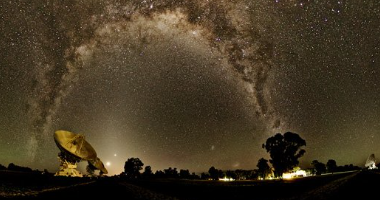From Outback to Observatory: How Telescopes are Shaping Australia’s Astronomy Landscape

Australia’s expansive and varied terrain, ranging from the rugged Outback to the tranquil coastal areas, offers an optimal setting for delving into the marvels of the cosmos. Its varied terrain offers astronomers a rich tapestry of environments for conducting celestial observations and research.
At the heart of this exploration are telescopes, instrumental in shaping Australia’s astronomy landscape. Telescopes in Australia play a pivotal role in unlocking the mysteries of the cosmos, from observing distant galaxies to tracking celestial phenomena. This article will delve into the fascinating world of astronomy in Australia and how these astronomical devices are driving scientific discovery and public engagement.
Exploring Australia’s Unique Astronomy Landscape:
Australia’s geographical positioning in the Southern Hemisphere presents a distinct advantage for astronomers due to the accessibility of clear, unadulterated skies unmarred by light pollution. This environmental advantage facilitates observations of celestial phenomena with unparalleled clarity and precision. Consequently, Australia has emerged as a premier destination for astronomical research, fostering the establishment of world-renowned observatories equipped with cutting-edge telescopic technologies.
The Role of Telescopes in Scientific Research:
These astronomical devices serve as indispensable instruments in the pursuit of scientific inquiry within the field of astronomy throughout Australia. These sophisticated devices play multifaceted roles, from elucidating the intricate processes underlying the formation of stars and galaxies to meticulously tracking the trajectories of asteroids and comets traversing the cosmos. Notably, Australia’s active participation in international collaborative endeavours, exemplified by its pivotal involvement in the Square Kilometre Array (SKA) project, underscores the nation’s steadfast dedication to advancing the frontiers of astronomical exploration.
Advancements in Telescope Technology:
Recent years have witnessed remarkable strides in telescope technology, fundamentally transforming the methodologies employed by astronomers to explore the cosmos. Australia stands at the forefront of these innovations, boasting a diverse array of astronomical devices spanning various wavelengths of light, including traditional optical telescopes, state-of-the-art radio telescopes, and sophisticated space-based observatories. Pioneering technologies such as adaptive optics and interferometry have ushered in unprecedented levels of resolution and sensitivity, empowering astronomers to delve deeper into the mysteries of the universe than ever before.
Engaging the Public:
In addition to their pivotal role in scientific research, these astronomical devices serve as invaluable tools for public engagement, igniting a sense of wonder and curiosity about the cosmos among individuals of all ages. Public observatories and outreach programs hosted across Australia offer unique opportunities for enthusiasts to delve into the wonders of the night sky under the guidance of seasoned astronomers. By partaking in immersive activities like stargazing nights, telescope workshops, and astronomy festivals, individuals gain first hand exposure to the mesmerising splendour and intricate nature of the universe. This fosters a heightened appreciation for astronomy and scientific exploration.
Preserving Dark Skies:
In addition to facilitating scientific research and public engagement, these astronomical devices also play a pivotal role in preserving Australia’s dark skies. The vast, uninhabited regions of the Outback offer some of the darkest skies in the world, providing optimal conditions for astronomical observations. Efforts to safeguard these dark skies are essential for maintaining the integrity of Australia’s astronomy landscape. Initiatives such as the Dark Sky Reserve program aim to protect designated areas from light pollution, guaranteeing that forthcoming generations retain the privilege of relishing unimpeded vistas of the stars. By preserving these pristine nocturnal environments, they contribute to shaping Australia’s astronomy landscape by safeguarding the conditions necessary for unparalleled celestial exploration and discovery.
From the remote Outback to state-of-the-art observatories, telescopes in Australia are instrumental in shaping Australia’s astronomy landscape. As technological progress persists and our comprehension of the universe expands, these instruments will remain indispensable for unravelling the enigmas of the cosmos. Whether for scientific research, public engagement, or simply gazing up at the night sky in awe, these astronomical devices Australia-wide play a vital role in connecting people to the wonders of the universe.




